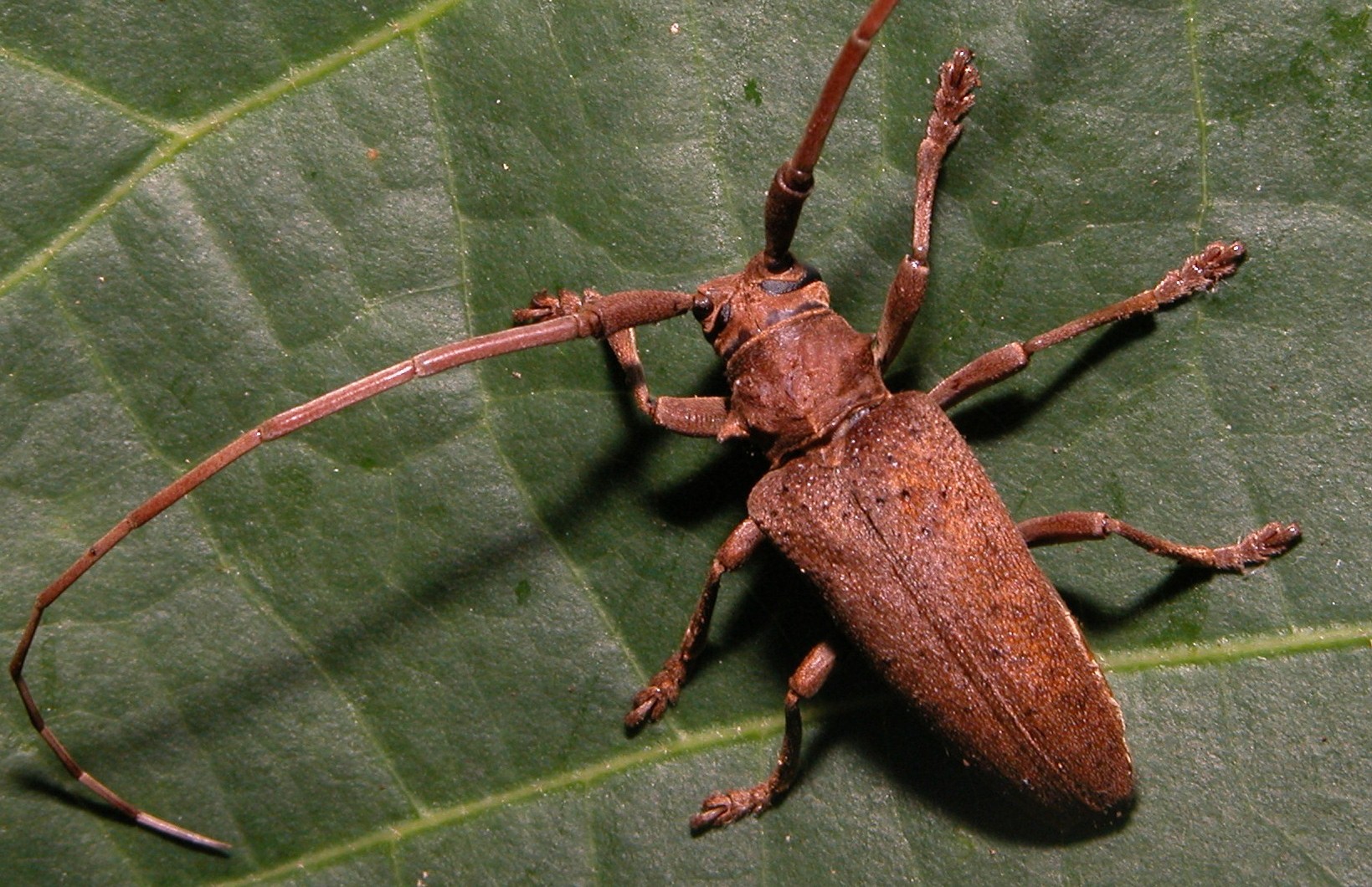| loongfah |
Posted - 14/04/2013 : 15:43:27
Thanks, Francesco. Unfortunately, I don't have the physical specimen and can't look at the prosternum to confirm the genus.
For Sternohammus, there seems to be 3 candidates in this region: - Sternohammus femoralis (Aurivillius,1928) Borneo
- Sternohammus niasensis Breuning,1935 (Sumatra)
- Sternohammus sumatranus Breuning,1935 (Sumatra)
S. niasensis seems to be out because of "apical elytra rounded evenly".
Breuning's description of S. sumatranus (the type is a female) fits some aspects of my photo, although it said the antenna is hardly longer than half of the body, and the sixth antenna segment is slightly thickened (i.e. if I get the German translation correct!). My picture doesn't seem to have these features.
Indeed, I have a picture of another specimen, whose antennae are much longer, but the 6th antenna segment is also not thickened. Both my specimens are both obtained at lights.

506.96 KB
Could it be Sternohammus femoralis?
Anyone has the description or a picture? |


